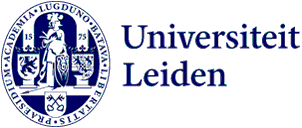812 search results for “co2 reaction” in the Public website
-
Ab initio molecular dynamics calculations on reactions of molecules with metal surfaces
Promotor: Prof.dr. G.J. Kroes
-
 Geert-Jan Kroes
Geert-Jan KroesFaculty of Science
-
Beyond the Born-Oppenheimer Static Surface Model for Molecule- Surface Reactions
Several techniques are explored for going beyond the born-oppenheimer static surface model for molecule-surface reactions.
-
Chemically Accurate Simulation of a Prototypical Surface Reaction: H-2 Dissociation on Cu(111)
Methods for accurately computing the interaction of molecules with metal surfaces are critical to understanding and thereby improving heterogeneous catalysis.
-
Atom addition reactions in interstellar ice - new pathways towards molecular complexity in space -
Promotor: Prof.dr. H.V.J. Linnartz, Co-Promotores: S. Ioppolo, H.M. Cuppen
-
Mechanistic studies of the water oxidation reaction with molecular iron catalysts
In this dissertation iron-based homogeneous catalysts were synthesized, characterized and investigated for water oxidation activity.
-
Semi-empirical approach to the simulation of molecule-surface reaction dynamics
Catalysis is of extreme relevance in the production of everyday materials and plays a central role in many aspects of our life.
-
The optimization and scale-up of the electrochemical reduction of CO₂ to formate
Carbon dioxide capture and utilization technologies are necessary to create a truly circular economy. The electrochemical reduction of carbon dioxide to formate is an appealing carbon utilization method as it can be performed at room temperature and pressure, it only requires two electrons, and it has…
-
Experiments on CHD3 + Pt(111): New Insights into a Prototypical Gas–Surface Reaction
The dissociative chemisorption of methane on metal surfaces is of fundamental and practical interest, being a rate-limiting step in the steam reforming process. The reaction is best modeled with quantum dynamics calculations, but these are currently not guaranteed to produce accurate results because…
-
Roman-Catholic reactions to Protestant 'moderns' in the Netherlands, 1840-1870
Ineke Smit defended her thesis on 17 September 2019
-
Van Marum Colloquium: On the Stability of Oxygen Reduction Reaction Catalysts
Lecture
-
Observing what cannot be observed: computational electrochemistry from carbon to hydrogen
In this thesis, we consider various (electro)chemical phenomena at surfaces and nanoparticles and their underlying atomistic processes, which we studied using first-principles methods such as density functional theory.
-
CO2-reduction and economic growth: can they go hand-in-hand?
Fearing a trade-off with economic growth, countries feel discouraged to cut their CO2 emissions. But do the two really not go together? Environmental scientist Ranran Wang and her colleagues investigated the relationship between economic growth and CO2 emissions in 73 countries from 1970 to 2016. Wang:…
-
Students make CO2 calculator
Two students from the Leiden-Delft MSc Industrial Ecology programme have made a carbon footprint calculator for the website www.doemaarduurzaam.nl; the website where the Dutch public broadcasting organisations collect everything broadcasted about sustainability. The carbon footprint calculator allows…
-
Catalysts contribute their own oxygen for reactions
A catalyst: normally a substance that speeds up a chemical reaction, without adding molecules to this reaction. Scientists from the group of Prof. Marc Koper of Leiden University and Prof. Yang Shao-Horn of MIT now discovered that in specific reactions that need oxygen, catalysts called metal oxides…
-
Carbon4PUR | Turning industrial waste gases (mixed CO/CO2 streams) into intermediates for polyurethane plastics for rigid foams/building insulation
What would be the environmental performance of the Carbon4PUR technology at industrial scale in the future?
-
Accurate Probabilities for Highly Activated Reaction of Polyatomic Molecules on Surfaces Using a High-Dimensional Neural Network Potential: CHD3
An accurate description of reactive scattering of molecules on metal surfaces often requires the modeling of energy transfer between the molecule and the surface phonons. Although ab initio molecular dynamics (AIMD) can describe this energy transfer, AIMD is at present untractable for reactions with…
-
production by a molecular copper catalyst: A crucial relation between reaction rate and mass transport
Hydrogen peroxide (H2O2) generation via electrochemical oxygen reduction is a sustainable production method for this bulk chemical. However, the selectivity of molecular catalysts for electrochemical H2O2 generation has hardly been investigated in a systematic manner, and it is unknown if their stability…
-
Electrolysis and fuel production
Electrolysis is a technique that can be used to convert CO2 into fuels and other useful products. To do this efficiently and on a large scale, however, we need to understand exactly how electrolysis works. Professor Marc Koper is an expert in this field.
-
Energy & Sustainability
Twenty years from now, the world population is estimated to be around 8.7 billion people, compared to the current 7.3 billion. In combination with the improvements in living standards and the corresponding growth in consumption, this will result in an enormous increase in the demand for food, consumables,…
-
Catalysis and Surface Chemistry
In the Catalysis and Surface Chemistry group, we investigate how catalysis works on the molecular level. The group is divided in six subgroups, focusing on different aspects of heterogeneous catalysis, homogeneous catalysis and electrocatalysis.
-
Border tax on CO2 offers huge opportunity to fight climate change
A tax on CO2 emissions from products entering the EU offers unprecedented opportunities in the fight against global warming. That is the conclusion of research on which Leiden environmental scientist Hauke Ward collaborated. ‘A new world is opening up,’ Ward says. ‘But success hinges on how we involve…
-
Psychologists test societal acceptance of underground storage of CO2
How can we reduce CO2 emissions from industry? Leiden psychologists Emma Mors and Christine Boomsma are examining the public perception and acceptance around the capture and storage of carbon dioxide. This is part of the ALIGN CCUS European research programme.
-
 Ranran Wang
Ranran WangFaculty of Science
-
2022 Sustainability Report: Fewer CO2 emissions and greener operational management
The University's CO2 footprint has once again decreased. This is the conclusion of the 2022 Sustainability Report. The report also concludes that steps have been taken to integrate sustainability into Leiden University education and research.
-
Electrochemistry for renewable energy
Imagine we could convert the greenhouse gas CO2 into synthetic fuels using sustainable energy. This would enable us to reduce the amount of CO2 and at the same time store wind and solar energy in an innovative way. Chemist Akansha Goyal (Leiden University) is conducting fundamental research to make…
-
Plant-based diet can help unlock technology to harness huge CO2 removal
Bioenergy with carbon capture and storage (BECCS) is a promising method for removing carbon dioxide (CO2) from the atmosphere and simultaneously generating energy. Yet this method is controversial, as it may require a great deal of land and water. Researchers at Leiden University have now proposed a…
-
Fundamental research on the voltammetry of polycrystalline gold
Voltammetry plays a crucial role in modern scientific research by offering valuable insights into the electrochemical properties of materials, with wide-ranging applications in fields such as materials science, energy storage, corrosion studies, and sensor development.
-
Unfolding secrets of catalysts
To construct catalysts that can produce fuels from CO2 innumerable times, we need to learn much more about how catalysis works. Irene Groot is conducting groundbreaking research into catalysis at the atomic level.
-
Accelerating the Photocatalytic Water Splitting in Catalyst−Dye Complexes
As a virtually inexhaustible source, solar energy plays a major role in future global energy scenarios.
-
Van Marum Colloquia
The "Van Marum Colloquia" are a collaborative lecture series between the LION and LIC institutes, focusing on fundamental and applied surface science.
-
Reactivity of cobalt(II)-dichalcogenide complexes: correlation between redox conversion and ligand-field strength
The redox-conversion reaction of metal-disulfide and metal-thiolate complexes are important, as they may shed light on electron-transfer reactions that often occur in Nature.
-
Selectivity and competition between the anodic evolution of oxygen and chlorine
Sustainable energy from wind and solar is most readily available near the sea.
-
Research
The chemical industry must continue to innovate for a more sustainable, healthier society. The reseachers from the Leiden Institute of Chemistry (LIC) contribute by applying their knowledge to themes such as sustainability, energy and health.
-
Computational electrocatalysis
This dissertation focused on computational methods based on first principles calculations using the Density Functional Theory (DFT) framework. Emphasis was laid on affordable methods that can provide a tradeoff between computational expense and accuracy.
-
Sustainability Report 2021: continuing to reduce our CO2 footprint
Leiden University continued to reduce its carbon footprint in 2021 by being more careful with natural resources and making structural reductions to its energy consumption. This is what it says in the Sustainability Report 2021.
-
 Onno van der Heijden
Onno van der HeijdenFaculty of Science
-
Research
Research at the Catalysis and Surface Chemistry group is comprised of the following research themes:
-
Stereoelectronic and conformational effects in oxocarbenium, iminium and iminosugar ammonium ions
Promotor: G.A. van der Marel, Co-promotor: J.D.C. Codée
-
Renewable Energy
The transition to new and renewable energy sources should be completed by 2050. Researchers in various disciplines at Leiden University are conducting unique research that will help us make this transition and reduce CO2 emissions.
-
Catalysis of the electrochemical water oxidation to oxygen
Promotor: M.T.M. Koper, Co-Promotor: F. Calle-Vallejo
-
Computational approaches to dissociative chemisorption on metals: towards chemical accuracy
We review the state-of-the-art in the theory of dissociative chemisorption (DC) of small gas phase molecules on metal surfaces, which is important to modeling heterogeneous catalysis for practical reasons, and for achieving an understanding of the wealth of experimental information that exists for this…
-
Design of homogeneous water oxidation catalysts
To design the ideal water oxidation catalyst, understanding of the catalytic mechanism and decomposition pathways is essential.
-
Fundamental Research in Energy & Sustainability
Twenty years from now, the world population is estimated to be around 9 billion people (now 8 billion). In combination with the improvements in living standards and the corresponding growth in consumption, this population will result in an enormous increase in the demand for food, consumables, water…
-
Non-adiabatic effects may substantially affect rate of reaction relevant to Haber-Bosch catalysis
Using N2 dissociation on Ru(0001) as a representative showcase (for catalysts employed in the Haber-Bosch process), we have shown for the first time that non-adiabatic effects can substantially reduce a molecule’s dissociation probability on a metal surface. These effects are currently completely unaccounted…
-
Solid State NMR and modelling of photoinduced energy and electron transfer
Huub de Groot is professor in Biophysical Organic Chemistry. With his team he works in the field of photosynthesis and artificial photosynthesis. The molecular basis for photosynthesis is formed by protein complexes and organelles that contain chlorophyll molecules. The antenna systems herein capture…
-
Marc Koper wins Brian Conway Prize 2016 for electrochemistry
Marc Koper, Professor of Catalysis and surface chemistry, has won the Brian Conway Prize for Physical Electrochemistry of the International Society of Electrochemistry (ISE). The ISE jury chose Koper as the winner due to his outstanding contributions in the field of physical electrochemistry.
-
 Coen van Hasselt
Coen van HasseltFaculty of Science
-
Travelling waves on trees and square lattices
In this thesis we study bistable reaction-diffusion equations on lattice domains.
-
Van Marum Colloquium: Catalyst Design at Extremely Small Sizes: From CO2 Reduction to Ammonia Production
Lecture
